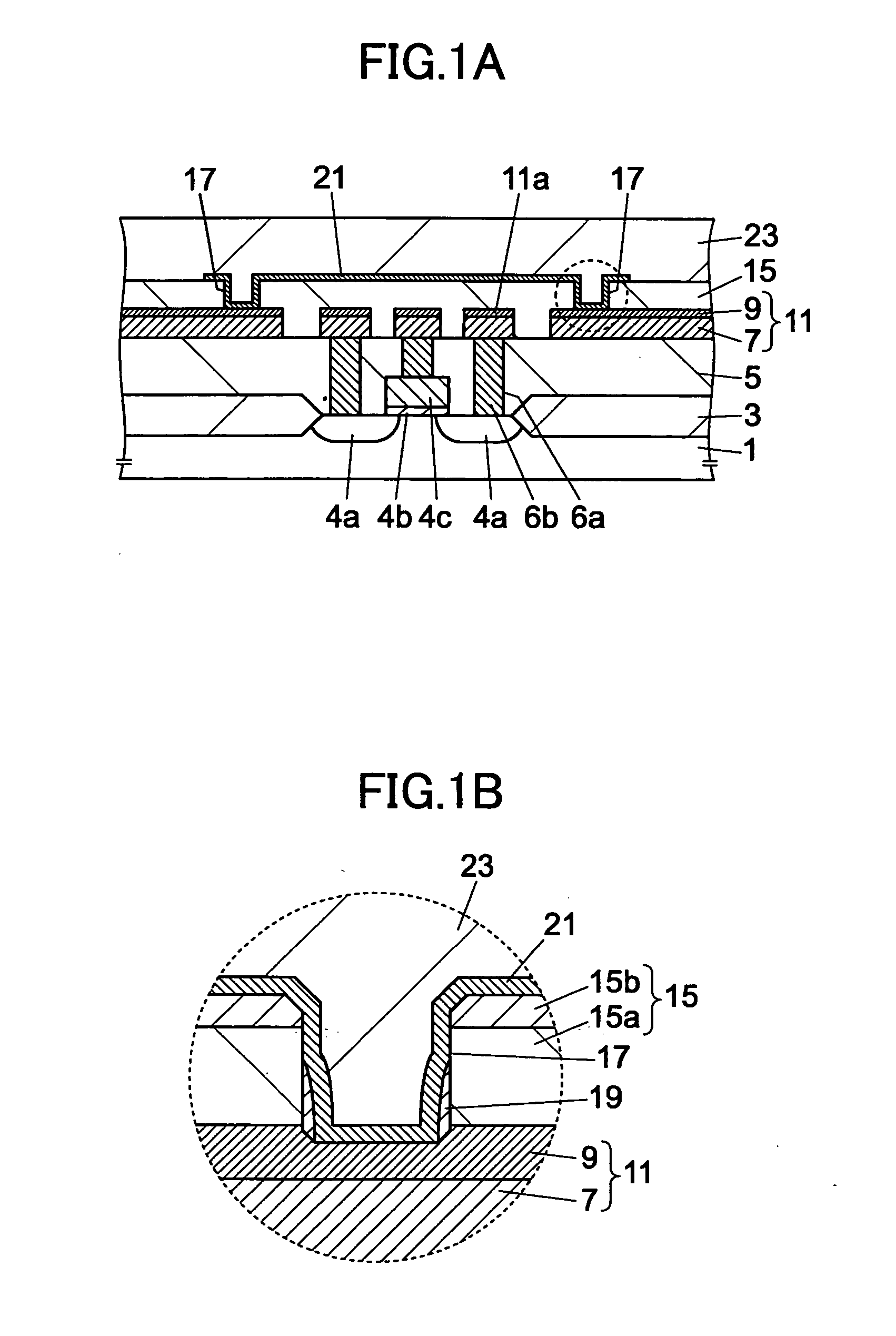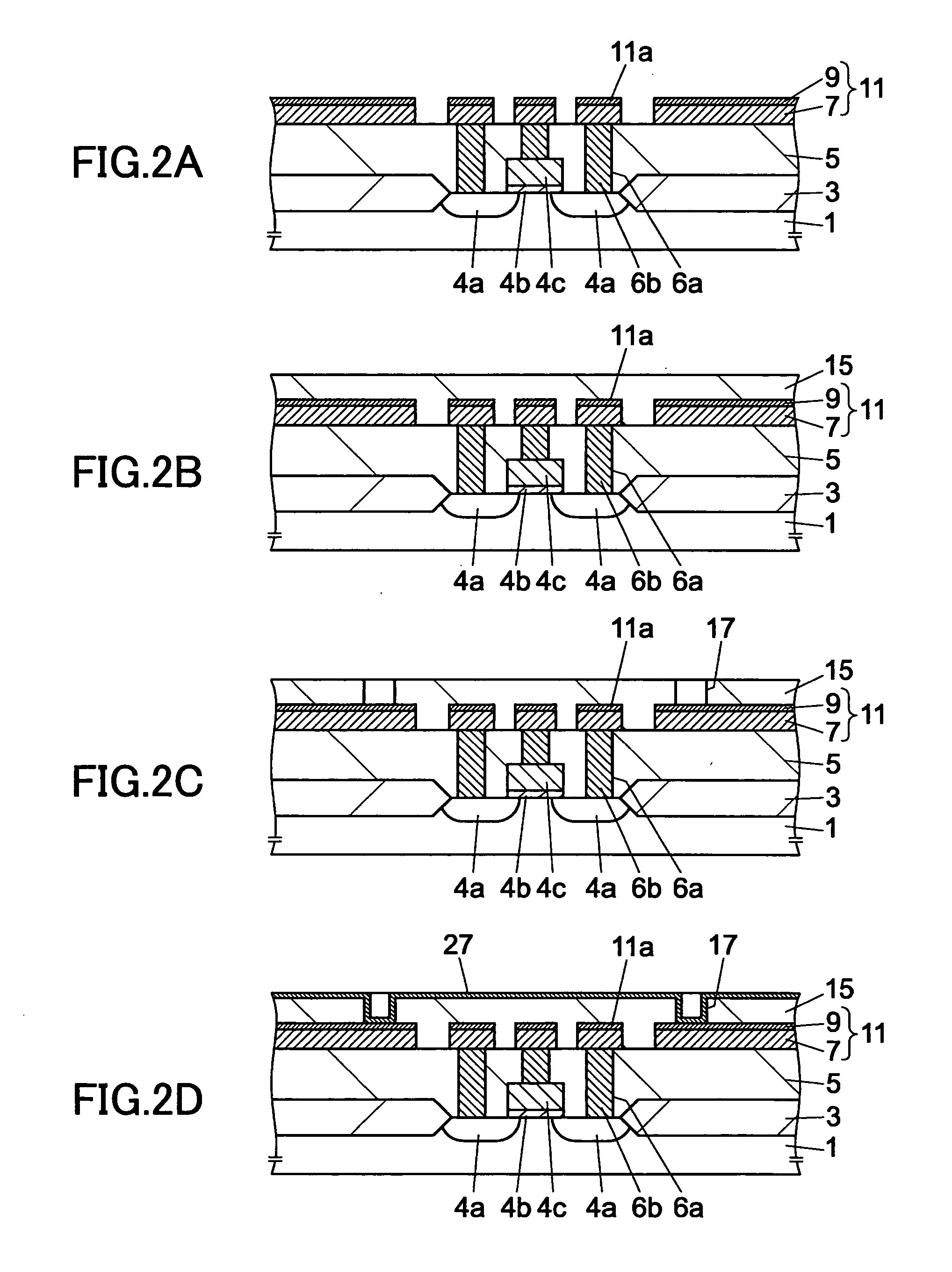Semiconductor device
a technology of semiconductor devices and metal films, applied in the direction of semiconductor devices, semiconductor/solid-state device details, diodes, etc., can solve the problems of difficult patterning of high melting point metal films by dry etching technology, difficult to prevent connection holes, and over-etching (excessive etching) to achieve the effect of reducing power, reducing damage, and easy diffusion
- Summary
- Abstract
- Description
- Claims
- Application Information
AI Technical Summary
Benefits of technology
Problems solved by technology
Method used
Image
Examples
Embodiment Construction
]
[0044] [Problem(s) to be solved by the Invention]
[0045] For example, when an NSG (non-doped silicate glass) film is used as an underground insulator film of a metal thin-film-resistor object, since it is hard to diffuse the metal thin-film-resistor object in the underground insulator film, high laser power is needed when performing a laser trimming process on the metal thin-film-resistor object. Then, a problem arises in that adjacent regions of the metal thin-film-resistor object may be damaged, the adjacent regions including a passivation film formed on the metal thin-film-resistor object, an element under the metal thin-film-resistor object, and a silicon substrate.
SUMMARY OF THE INVENTION
[0046] It is a general object of the present invention to provide a semiconductor device equipped with an integrated circuit including a metal thin-film-resistor object, wherein damage of a region adjacent to the metal thin-film-resistor object by laser irradiation is reduced, substantially o...
PUM
 Login to View More
Login to View More Abstract
Description
Claims
Application Information
 Login to View More
Login to View More - R&D
- Intellectual Property
- Life Sciences
- Materials
- Tech Scout
- Unparalleled Data Quality
- Higher Quality Content
- 60% Fewer Hallucinations
Browse by: Latest US Patents, China's latest patents, Technical Efficacy Thesaurus, Application Domain, Technology Topic, Popular Technical Reports.
© 2025 PatSnap. All rights reserved.Legal|Privacy policy|Modern Slavery Act Transparency Statement|Sitemap|About US| Contact US: help@patsnap.com



